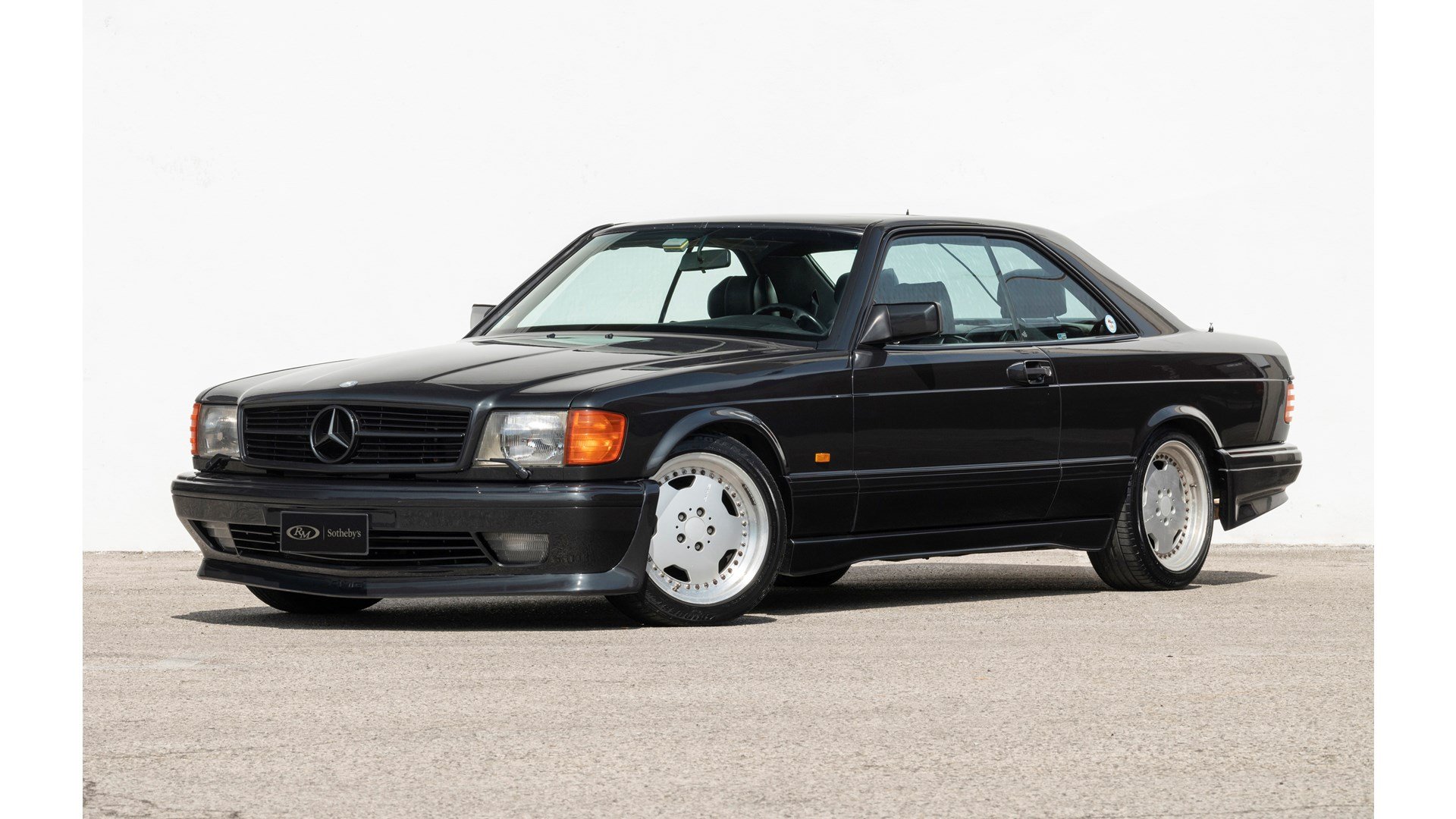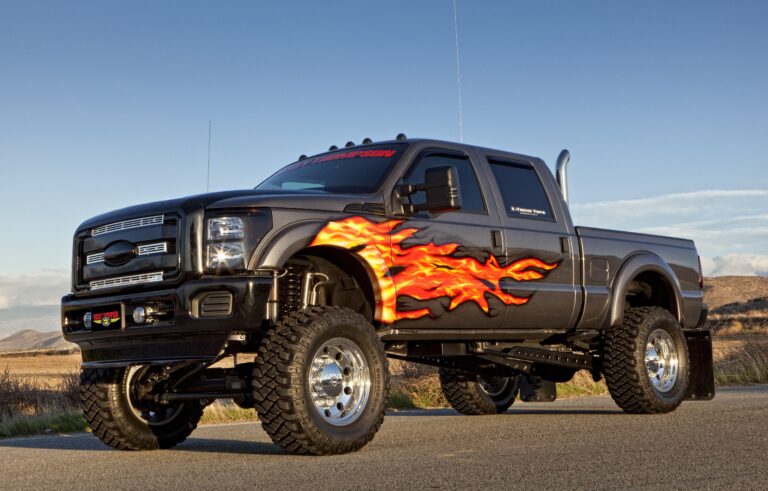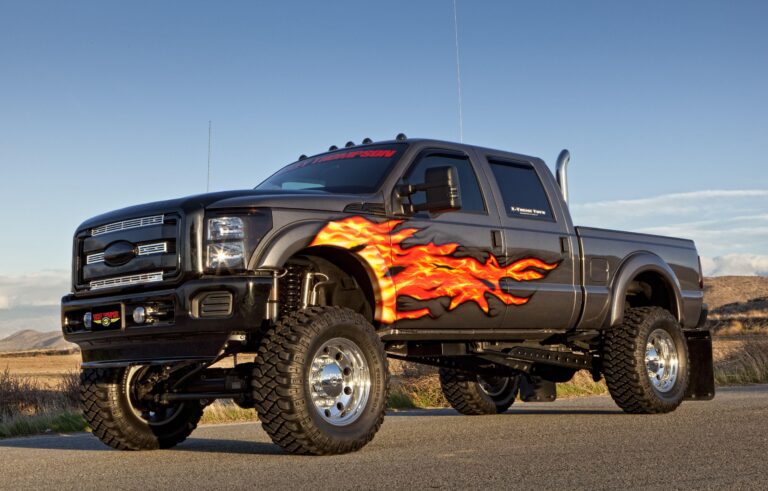1990 To 1995 Chevy Trucks For Sale: A Comprehensive Buyer’s Guide
1990 To 1995 Chevy Trucks For Sale: A Comprehensive Buyer’s Guide cars.truckstrend.com
In the vast landscape of pre-owned vehicles, few categories capture the hearts of enthusiasts and practical buyers alike quite like vintage trucks. Among these, the Chevrolet trucks produced between 1990 and 1995 stand out as a particularly sought-after segment. These workhorses, part of GM’s revered GMT400 platform (which ran from 1988 to 1998), represent a sweet spot in automotive history: modern enough for comfortable daily driving, yet simple enough for straightforward maintenance and customization.
For sale across countless online marketplaces, local dealerships, and private listings, these C/K series trucks offer a compelling blend of rugged durability, timeless design, and surprising affordability. Whether you’re seeking a reliable daily driver, a versatile work truck, a canvas for customization, or a nostalgic piece of Americana, a 1990-1995 Chevy truck might just be your ideal vehicle. This comprehensive guide will delve into what makes these trucks so desirable, what to look for when buying, and how to navigate the market to find your perfect classic Bowtie.
1990 To 1995 Chevy Trucks For Sale: A Comprehensive Buyer’s Guide
Why Choose a 1990-1995 Chevy Truck? The Enduring Appeal of the GMT400
The appeal of the 1990-1995 Chevy trucks is multi-faceted, drawing in a diverse range of buyers. Their enduring popularity is a testament to their fundamental strengths:
- Reliability & Durability: These trucks were built with a "less-is-more" philosophy when it came to complex electronics, relying on robust mechanical systems. The engines (particularly the small-block 350 V8) and transmissions are known for their longevity when properly maintained, making them excellent candidates for high mileage. Parts are readily available and often inexpensive.
- Timeless Design: While technically the "next generation" after the iconic square body, the GMT400 series retained a classic, no-nonsense aesthetic that has aged remarkably well. Its clean lines and proportionate stance give it a rugged yet handsome appearance that still turns heads, appealing to those who appreciate vintage style without the extreme age of older models.
- Affordability: Compared to newer trucks, or even later-model used trucks, the 1990-1995 Chevy trucks often offer exceptional value for money. This makes them accessible to a wider range of budgets, allowing buyers to acquire a capable and stylish vehicle without breaking the bank.
- Customization Potential: The GMT400 platform boasts one of the largest aftermarket support networks in the industry. Whether you’re looking to lift it for off-road adventures, lower it for a street-performance look, swap in a more powerful engine, or simply upgrade the interior, the possibilities are virtually endless. This makes them a popular choice for project builds and personalized vehicles.
- Versatility: From hauling equipment to cruising the highway, these trucks excel in a variety of roles. They can be reliable daily drivers, dedicated workhorses, comfortable family transporters (especially extended and crew cabs), or even show-stopping custom builds. Their versatility is a core part of their enduring appeal.

Key Models and Configurations (1990-1995)
The 1990-1995 Chevy truck lineup offered a wide array of configurations to suit different needs, identified primarily by the C/K series designation:
- C Series: Denotes a two-wheel-drive (2WD) truck.
- K Series: Denotes a four-wheel-drive (4WD) truck.

Beyond the drivetrain, trucks were categorized by their hauling capacity:
- 1500 Series (Half-Ton): The most common and popular for general use, daily driving, and lighter hauling.
- 2500 Series (Three-Quarter Ton): Designed for heavier loads and more demanding work, featuring stronger frames, suspensions, and larger brakes.
- 3500 Series (One-Ton): The heavy-duty workhorse, often available in dual-rear-wheel (dually) configurations for maximum towing and payload capacity.

Cab Styles:
- Regular Cab: Two doors, seating for two or three. The most common and often lightest configuration.
- Extended Cab (Club Cab): Two full doors and two smaller, rear-hinged access doors (introduced in 1992) or just a larger rear cab section. Offered more interior space for storage or occasional rear passengers.
- Crew Cab: Four full doors, seating for five or six. Ideal for families or crews needing more passenger space. More common in 2500 and 3500 series.
Bed Lengths:
- Short Box: Approximately 6.5 feet (often paired with regular or extended cabs).
- Long Box: Approximately 8 feet (available on all cab types).
Trim Levels:
- WT (Work Truck): Basic, no-frills model, often with manual windows and rubber floors, designed for utility.
- Cheyenne: A step up from WT, offering some comfort features like carpet and better upholstery.
- Silverado: The top-tier trim, boasting power windows, locks, air conditioning, upgraded interiors, and more chrome accents.
Under the Hood: Engine and Transmission Options
The heart of these trucks lies in their robust powertrain options. Understanding these is crucial for finding the right balance of power and efficiency for your needs.
Gasoline Engines:
- 4.3L V6 (TBI/CPI): A reliable and surprisingly capable base engine, offering decent fuel economy for a truck. Primarily found in 1500 series.
- 5.0L V8 (TBI – Throttle Body Injection): A smaller V8 option, providing a good balance of power for lighter duty.
- 5.7L V8 (TBI/Vortec): The legendary 350 small-block. For 1990-1994, it used TBI. In 1995, Chevrolet introduced the improved Vortec version (Sequential Central Port Injection) for the 5.7L, offering more power, better fuel efficiency, and improved drivability. This is often considered the most desirable gasoline engine due to its balance of power, reliability, and parts availability.
- 7.4L V8 (TBI): The "Big Block" 454 V8. This powerhouse was reserved for the 2500 and 3500 series trucks, providing immense torque for heavy towing and hauling.
Diesel Engines:
- 6.2L Diesel V8: An earlier diesel option, less common in this specific range and known for being underpowered.
- 6.5L Turbo Diesel V8: More common, particularly in the later models of this range. Offered significant torque and better fuel economy than the big-block gasoline engines, though it has known issues with PMD (Pump Mounted Driver) and cooling if not properly maintained.
Transmissions:
- Manual Transmissions:
- NV3500 (5-speed): Common with V6 and light-duty V8 engines.
- NV4500 (5-speed): A heavy-duty manual, often paired with the 7.4L V8 and in 2500/3500 series trucks. Known for its robust design.
- Automatic Transmissions:
- 4L60/4L60E (4-speed automatic): The light-duty automatic, found with V6 and 5.0L/5.7L V8 engines. The "E" denotes electronic control, introduced around 1993, which is generally more reliable and offers better shifting.
- 4L80E (4-speed automatic): The heavy-duty automatic, paired with the 7.4L V8 and often with the 6.5L Diesel in 2500/3500 series trucks. This transmission is highly durable and sought after.
What to Look For When Buying (Important Considerations)
Purchasing a vehicle that’s 25-30 years old requires a diligent approach. Here are key areas to inspect:
- Rust: This is the primary enemy. Common rust spots include:
- Rocker panels and cab corners
- Wheel wells and fender lips
- Bed floors and supports
- Frame rails (especially near suspension mounting points)
- Underneath the doors and around the windshield.
- Solution: Minor surface rust can be addressed, but extensive frame rust or perforation in critical areas is a major red flag.
- Engine Condition:
- Look for oil leaks (valve covers, oil pan, rear main seal).
- Listen for unusual noises (knocks, ticks, excessive lifter noise).
- Check exhaust for excessive blue smoke (oil burning) or black smoke (rich fuel mixture).
- Verify coolant is clean, not milky or oily.
- Ask for maintenance records.
- Transmission:
- Check fluid level and condition (should be red, not brown or burnt-smelling).
- Test for smooth, timely shifts, both up and down. No slipping or harsh engagement.
- For manual transmissions, check clutch engagement and shifter feel.
- Suspension & Steering:
- Look for worn ball joints, tie rods, and control arm bushings (common wear items).
- Check for excessive play in the steering wheel.
- Test drive on uneven surfaces to listen for clunks or squeaks.
- Brakes: Check pad and rotor wear, and inspect brake lines for rust or leaks. Test for firm pedal feel.
- Electrical System: Test all lights, gauges, power windows, locks, and especially the air conditioning system. Many older trucks have non-functional AC.
- Interior: Inspect seat upholstery, dashboard for cracks, headliner condition, and general cleanliness. While cosmetic, it indicates how well the truck was cared for.
- Frame Integrity: A bent or cracked frame is a deal-breaker. Look for any signs of accident damage or poor repairs.
- Maintenance History: A truck with detailed service records is always preferable. It shows a caring owner and can help predict future needs.
- Title Status: Ensure the title is clear, not salvage or rebuilt, which can complicate insurance and resale.
Tips for Finding and Purchasing Your GMT400
- Where to Look:
- Online Marketplaces: Facebook Marketplace, Craigslist, eBay Motors, AutoTrader Classics, Bring a Trailer (for high-end examples).
- Local Dealerships: Some used car lots specialize in older trucks.
- Classic Car Shows/Auctions: Good for finding restored or exceptionally well-maintained examples.
- Word-of-Mouth: Let friends and family know you’re looking.
- Budgeting: Beyond the purchase price, factor in potential immediate repairs, insurance, registration, and ongoing maintenance.
- Test Drive: Take it for a thorough drive. Listen to the engine, feel the transmission shift, check the brakes, and pay attention to steering and suspension. Try driving at various speeds and over different road conditions.
- Pre-Purchase Inspection (PPI): This is perhaps the most critical step. Have a trusted, independent mechanic (ideally one familiar with older trucks) perform a comprehensive inspection before you buy. This small investment can save you thousands in unexpected repairs.
- Negotiation: Be prepared to negotiate, especially on private sales. Research similar trucks’ selling prices to have a baseline. Don’t be afraid to walk away if the deal doesn’t feel right.
- Common Upgrades/Modifications: Many GMT400 trucks have been modified. Evaluate if the modifications are to your taste and if they were done professionally. Poorly executed mods can lead to problems.
Potential Challenges and Solutions
While these trucks are generally robust, their age means potential issues:
- Age-Related Wear: Components like bushings, hoses, belts, and seals will eventually wear out.
- Solution: Factor in a budget for routine maintenance and replacement of common wear items. Learning basic DIY mechanics can save money.
- Parts Availability: While generally excellent due to the platform’s popularity, some specific trim pieces or unique options might be harder to source.
- Solution: Utilize aftermarket suppliers, salvage yards, and online forums dedicated to GMT400 trucks.
- Fuel Economy: These are older trucks, and fuel efficiency is not their strong suit, especially with the V8s. Expect 10-18 MPG depending on engine, drivetrain, and driving style.
- Solution: Set realistic expectations. Proper engine tuning and maintenance can optimize what efficiency is available.
- Rust (reiterated): Can be a persistent issue, especially in colder climates with road salt.
- Solution: Prioritize rust-free examples if possible. For minor issues, professional repair is key, followed by diligent cleaning and undercoating to prevent recurrence.
- Previous Abuse/Poor Maintenance: Many of these trucks were used for hard work and not always maintained meticulously.
- Solution: The pre-purchase inspection is your best defense. Avoid trucks that show clear signs of neglect or abuse, as underlying issues can be extensive.
Price Table: 1990-1995 Chevy Trucks For Sale
Prices for 1990-1995 Chevy trucks vary wildly based on condition, mileage, specific configuration (cab, bed, 2WD/4WD), engine, trim level, and geographic location. The table below provides general estimates, but thorough market research is always recommended.
| Year Range | Model/Series | Cab Type | Engine (Common) | Condition: Project/Parts ($) | Condition: Good Driver ($) | Condition: Excellent/Restored ($) |
|---|---|---|---|---|---|---|
| 1990-1995 | C/K 1500 (2WD/4WD) | Regular Cab | 4.3L V6, 5.0L V8, 5.7L V8 | $1,000 – $3,000 | $4,000 – $8,000 | $9,000 – $20,000+ |
| 1990-1995 | C/K 1500 (2WD/4WD) | Extended Cab | 5.0L V8, 5.7L V8 | $1,500 – $3,500 | $4,500 – $9,000 | $10,000 – $22,000+ |
| 1990-1995 | C/K 2500 (2WD/4WD) | Regular/Extended | 5.7L V8, 7.4L V8, 6.5L TD | $1,500 – $4,000 | $5,000 – $10,000 | $11,000 – $25,000+ |
| 1990-1995 | C/K 3500 (2WD/4WD) | Regular/Crew Cab | 7.4L V8, 6.5L TD | $2,000 – $5,000 | $6,000 – $12,000 | $13,000 – $30,000+ |
Note: Prices are highly variable. Trucks with desirable options (e.g., specific colors, higher trims like Silverado, manual transmissions paired with V8s, or low mileage) will command higher prices. Crew Cab Dually 3500s in exceptional condition can often exceed these estimates.
Frequently Asked Questions (FAQ)
Q: Are these trucks reliable?
A: Yes, generally speaking, the 1990-1995 Chevy trucks are known for their reliability due to their robust and relatively simple mechanical designs. Proper maintenance is key to their longevity.
Q: What’s the difference between TBI and Vortec engines?
A: TBI (Throttle Body Injection) was used in earlier models (1990-1994 5.7L V8) and is a simpler, less efficient fuel delivery system. Vortec (Sequential Central Port Injection), introduced in the 1995 5.7L V8, offers better fuel atomization, leading to more power, improved fuel economy, and smoother operation.
Q: Is rust a major concern?
A: Yes, rust is the most common issue, especially in regions that use road salt. Always thoroughly inspect the frame, cab corners, rocker panels, and wheel wells for signs of significant rust or rot.
Q: Are parts readily available for these trucks?
A: Absolutely. Due to the high production numbers and enduring popularity of the GMT400 platform, parts are exceptionally easy to find, both new aftermarket and used OEM, and are generally affordable.
Q: What kind of fuel economy can I expect?
A: Don’t expect great fuel economy. V6 models might achieve 15-18 MPG, while V8s typically range from 10-14 MPG depending on the engine size, drivetrain (2WD vs. 4WD), and driving habits.
Q: Can these trucks still tow heavy loads?
A: Yes, they are very capable. Towing capacity varies significantly by series (1500, 2500, 3500) and engine. The 7.4L V8 and 6.5L Turbo Diesel in 2500 and 3500 series trucks are excellent for heavy towing.
Q: Are they good for daily driving?
A: Many owners use them as daily drivers. The ride quality is "truck-like" but generally comfortable enough. With working AC and power options, they can be perfectly suitable for daily commuting, though fuel costs should be considered.
Q: Which is the best engine for these trucks?
A: For a balance of power, reliability, and widespread parts availability, the 5.7L V8 (350) is often considered the best choice, especially the 1995 Vortec version. For heavy-duty applications, the 7.4L V8 (454) is unmatched.
Conclusion
The 1990 to 1995 Chevy trucks, part of the legendary GMT400 family, offer a compelling package for anyone in the market for a used pickup. Their blend of classic styling, rugged dependability, and vast customization potential makes them an increasingly desirable choice in today’s market. While their age means you’ll need to be diligent in your inspection, particularly regarding rust and maintenance history, the rewards of owning one are significant.
With proper research, a keen eye for detail, and a smart pre-purchase inspection, you can find a solid GMT400 that will provide years of reliable service, whether as a dedicated workhorse, a stylish daily driver, or a foundation for your next dream build. These trucks are more than just vehicles; they are a piece of American automotive heritage, ready for their next chapter on the road.





